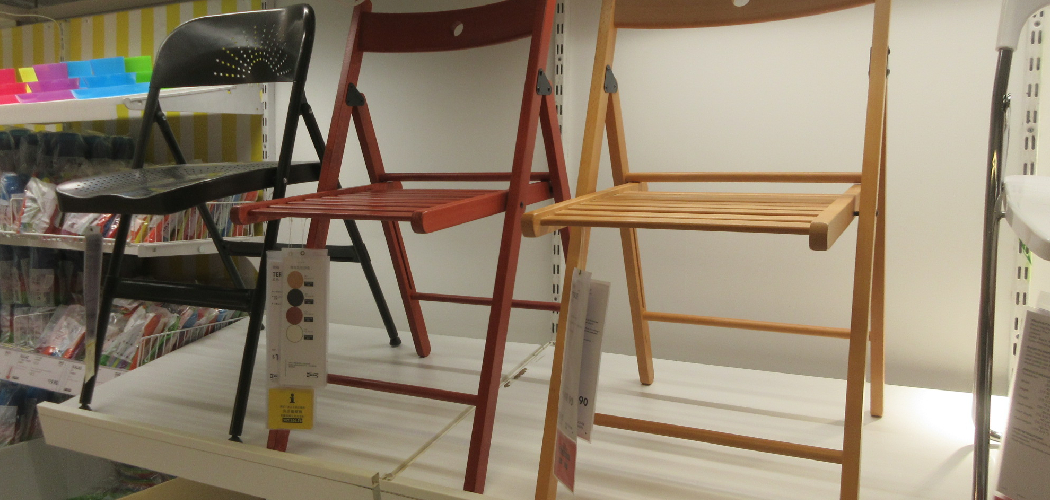Are you tired of tripping over your folding chairs every time you need to get something from the garage? Or are you struggling to find a place to store them in your small apartment?
How to store folding chairs efficiently is essential for keeping your space organized and maximizing the chairs’ longevity. These versatile pieces of furniture can be easily tucked away when not in use, making them ideal for homes, offices, and event spaces with limited storage capacity. Proper storage involves stacking or hanging them methodically and ensuring they are kept in a safe, dry environment to prevent damage.
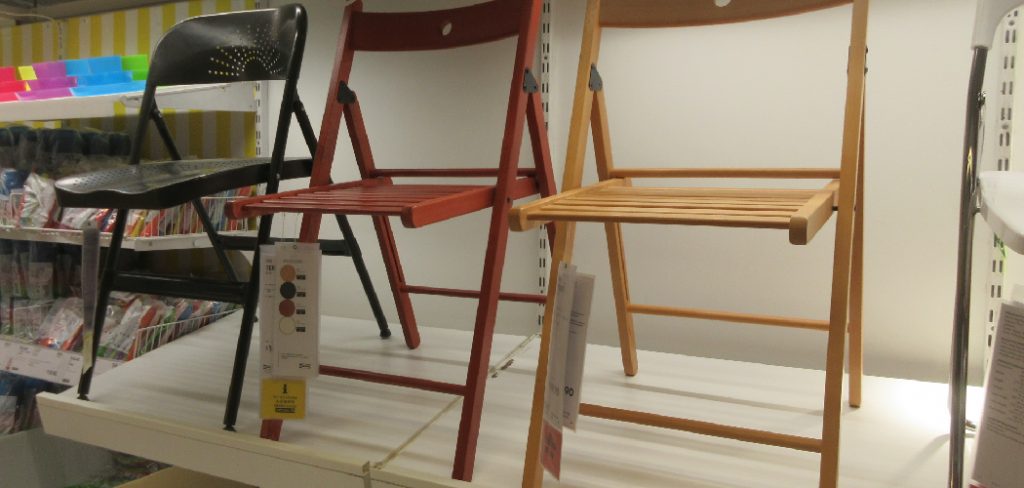
Whether you’re managing a small home setup or organizing larger-scale facilities, understanding the best ways to store folding chairs will help you maintain a clutter-free and functional space.
What Will You Need?
Before diving into the different storage techniques, gathering all the necessary materials and tools is important. These may include:
- A Designated Storage Area: This can be a closet, garage, shed, or any other space with sufficient room to store your folding chairs.
- Utility Hooks or Pegboard: For hanging chairs on walls or ceilings.
- Storage Racks or Carts: Ideal for stacking multiple chairs in one place.
- Protective Covers or Bags: To keep chairs safe from dust, moisture, and potential damage during transportation or long-term storage.
- Bungee Cords or Straps: These are useful for securing stacked chairs together and preventing them from shifting during transport.
Once you have these items, you can start organizing and storing your chairs in a way that works best for your space.
10 Easy Steps on How to Store Folding Chairs
Step 1. Choose a Suitable Location:
Select a location accessible and capable of protecting your folding chairs from potential damage. Consider areas like a dedicated closet, an empty garage corner, or a section of your basement. It’s essential to ensure the area is free from excessive moisture or extreme temperatures that can lead to rust, warping, or other deterioration over time.
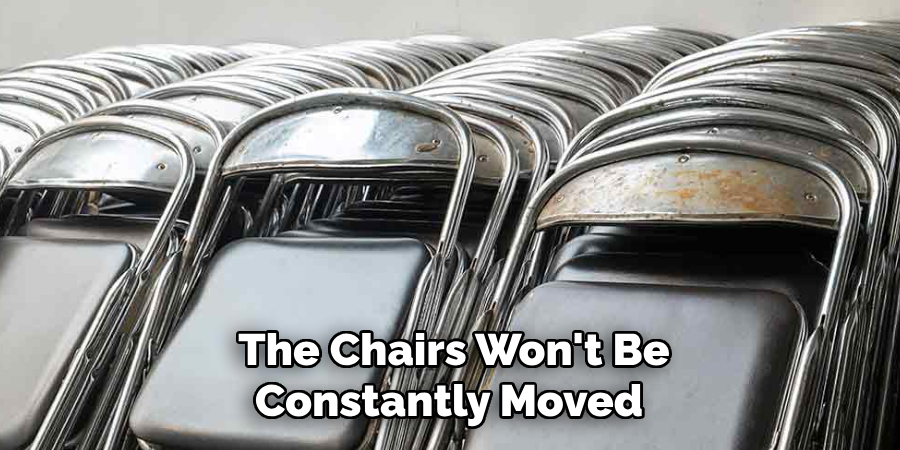
If you’re storing them in a garage or basement, consider using a dehumidifier to maintain optimal humidity levels. Choose a spot where the chairs won’t be constantly moved or bumped into, which can weaken their joints or cause accidents. Selecting a suitable location carefully will help preserve the condition and extend the life of your folding chairs.
Step 2. Clean the Chairs:
Before storing your folding chairs, ensure they are clean and free from dirt or debris. Begin by wiping down the chairs with a damp cloth to remove dust or grime. For a thorough clean, use a mild detergent mixture for any stubborn spots or stains. Drying the chairs completely is also important to prevent moisture-related issues like rust or mildew. Paying attention to the cleanliness and dryness of your chairs before storing them helps safeguard their condition and ensures they are ready for use the next time you need them.
Step 3. Inspect for Damage:
Once your folding chairs are clean, take the time to inspect them thoroughly for any signs of damage. Look for loose screws, cracked frames, or any other structural issues that may need attention. Tighten any loose components and consider using a rust remover on any metal parts that show corrosion. If necessary, repair or replace parts to ensure the safety and functionality of the chairs before storing them. By addressing potential issues early, you can prevent further deterioration and maintain the quality of your folding chairs, ensuring they remain in good condition for future use.
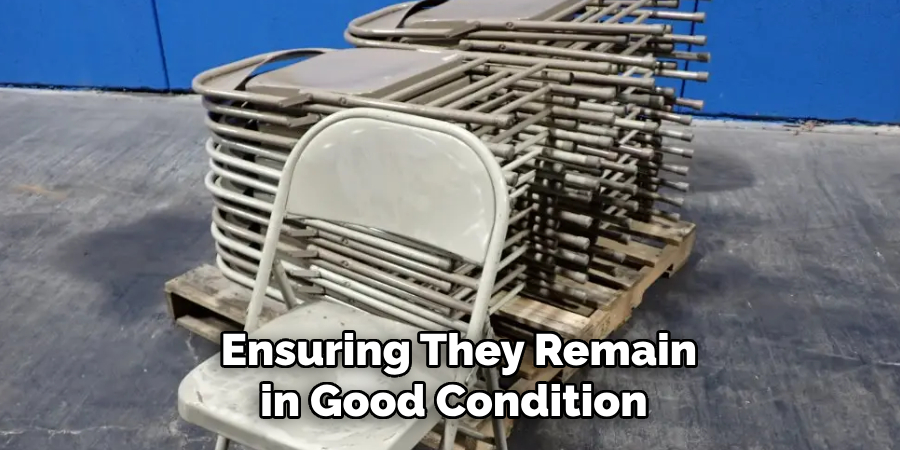
Step 4. Stack or Hang Chairs:
Decide the most efficient way to store your folding chairs by stacking or hanging them, depending on your storage space. If stacking, place the chairs evenly on top of one another to create a stable pile. This is best done using storage racks or carts to keep them in place and prevent tipping. If you hang them, use sturdy utility hooks attached to a wall or ceiling.
Hanging can save significant floor space and also helps to avoid unnecessary clutter. Ensure that the weight of the chairs is well-distributed and that hooks are securely fastened to prevent accidents. By properly stacking or hanging your folding chairs, you’ll use your storage area efficiently while keeping the chairs easy to access when needed.
Step 5. Secure Chairs with Straps or Cords:
Whether you’ve stacked or hung your folding chairs, securing them with bungee cords or straps is crucial to ensure they remain stable and do not shift out of place. This is especially important if your storage area is subject to movement or vibrations, which can cause stacked chairs to topple or hanging chairs to sway. Use durable straps or cords to bind the chairs together or anchor them to a stable surface. This added measure will help minimize the risk of accidental falls or damage, keeping your storage space safe and organized.
Step 6. Cover the Chairs:
After securing your folding chairs, you should cover them with protective covers or storage bags. This step is essential to shield your chairs from dust, dirt, and potential moisture while in storage. These covers can prevent scratches and other surface damage, especially if chairs are stored for an extended period. Opt for breathable materials that allow air circulation to minimize the risk of mold or mildew development. Properly covering your folding chairs will help preserve their aesthetic and functional condition, ensuring they’re ready and pristine for your next gathering or event.
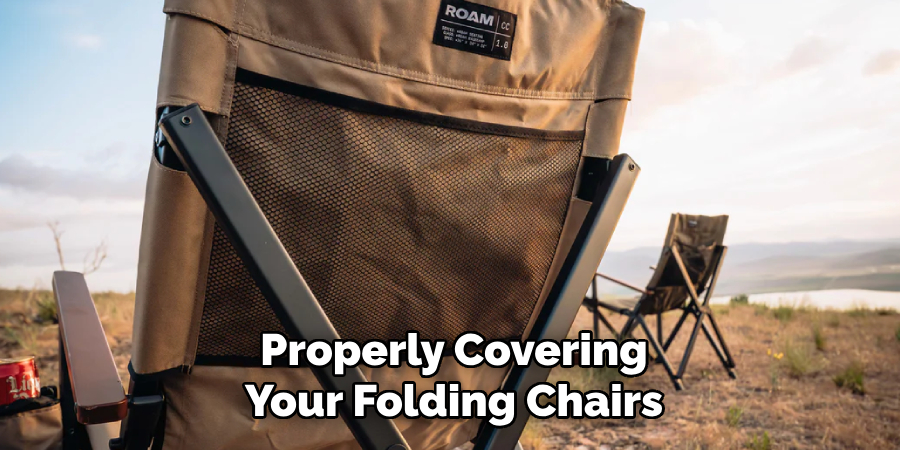
Step 7. Label the Storage Area:
To ensure quick and easy access to your folding chairs when needed, label the storage area or containers where they are kept. Use clear and visible markers or labels indicating the type of chairs stored within and any additional information that might be helpful, such as the number of chairs or their size. This organizational step becomes especially useful when chairs are not frequently used or multiple items are stored together in a single space. Labeling the areas or containers allows you to maintain an orderly environment and minimize the hassle of searching for your folding chairs, saving time and effort during setup for events or gatherings.
Step 8. Maintain an Inventory:
Keeping an inventory of your folding chairs is a practical step to ensure you’re aware of their quantity and condition at all times. Create a simple list or spreadsheet that includes information such as the total number of chairs, their types, and any notes about their condition or past repairs. Review and update this inventory periodically, especially after using or adding new chairs to the collection. This inventory not only helps in tracking the chairs but also assists in planning for future needs, whether buying more chairs or scheduling maintenance. A well-maintained inventory system enables streamlined organization and efficient management, always preparing you for events or gatherings.
Step 9. Regular Maintenance Check:
Conduct regular maintenance checks to prolong the lifespan of your folding chairs and ensure they remain in optimal condition. Schedule periodic inspections to assess the structural integrity and appearance of the chairs, looking for signs of wear and tear, loosened screws, or faded finishes. Address any minor issues promptly to avoid more significant damage over time. Regular cleaning, lubricating moving parts, and applying protective coatings can help keep the chairs in good shape. By incorporating maintenance checks into your care routine, you ensure that your folding chairs will be reliable and ready for use whenever needed, minimizing the chances of unexpected malfunctions during critical events.
Step 10. Plan for Seasonal Storage:
When it comes to long-term storage, especially during off-seasons, it’s essential to plan appropriately for your folding chairs. Consider whether the chairs will remain in a climate-controlled environment or be exposed to fluctuating temperatures and humidity. Maintaining a consistent temperature for climate-sensitive materials like wood or certain textiles can prevent warping or deterioration. Adjust your storage strategy accordingly by investing in dehumidifiers or moisture absorbers if necessary. Additionally, ensure your storage area is free from potential pest access, as insects and rodents can cause significant damage. By planning for seasonal storage changes, you can protect the longevity and usability of your folding chairs across all seasons, ensuring they stay in excellent condition for future events.
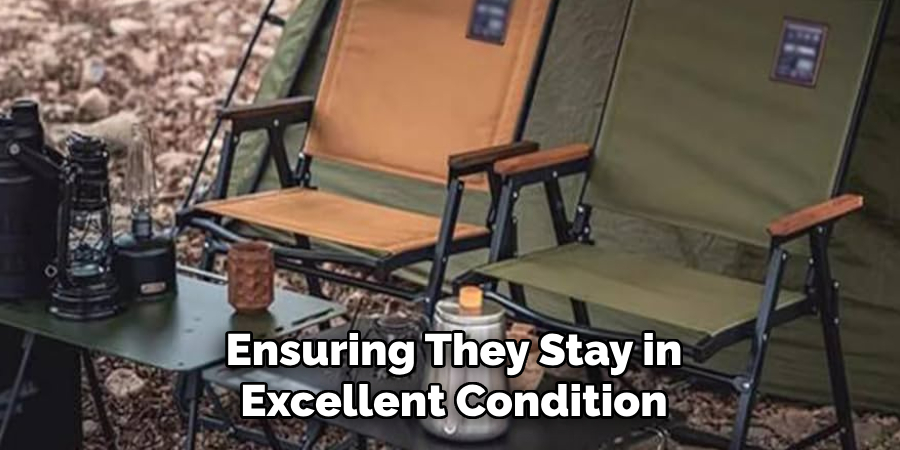
With these ten steps, you can adequately care for and store your folding chairs to maximize their lifespan and usability.
Conclusion
By following these comprehensive steps on how to store folding chairs, you can ensure that your folding chairs are stored correctly and remain in top condition for future use.
Proper stacking or hanging techniques prevent accidents and make efficient use of available space. Securing the chairs with straps or cords adds an extra layer of stability, while protective covers keep them clean and safe from environmental damage. Labeling the storage area and maintaining an up-to-date inventory aids in organization and accessibility.
Regular maintenance checks and planning for seasonal storage changes further contribute to the longevity of your chairs. Implementing these strategies will help maintain the aesthetic and functional integrity of your folding chairs and make them readily available for any events or gatherings you may host.
